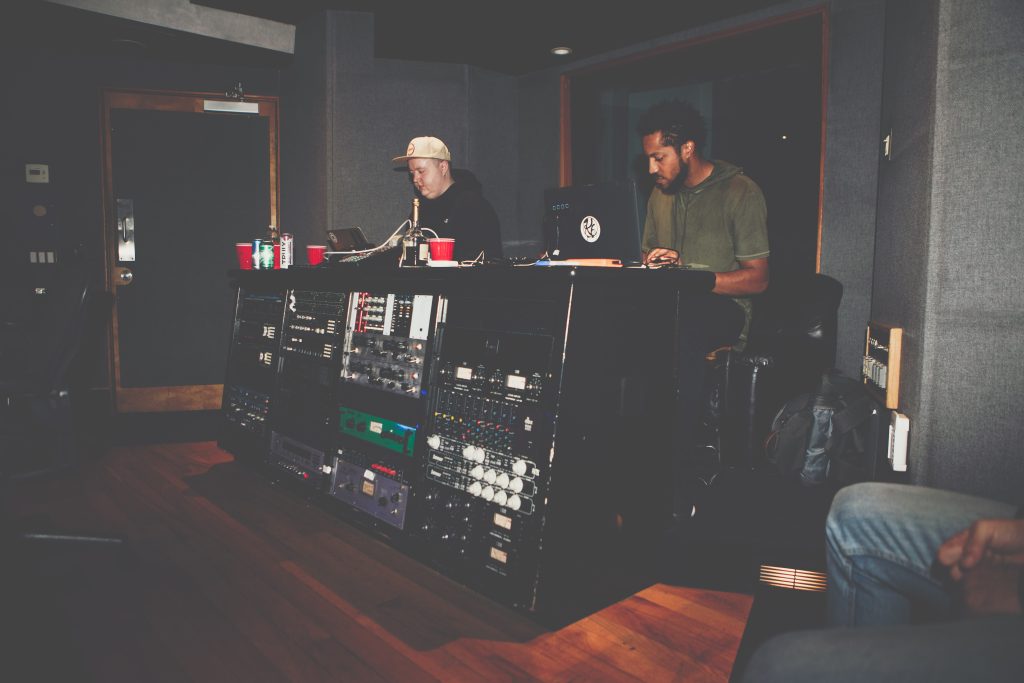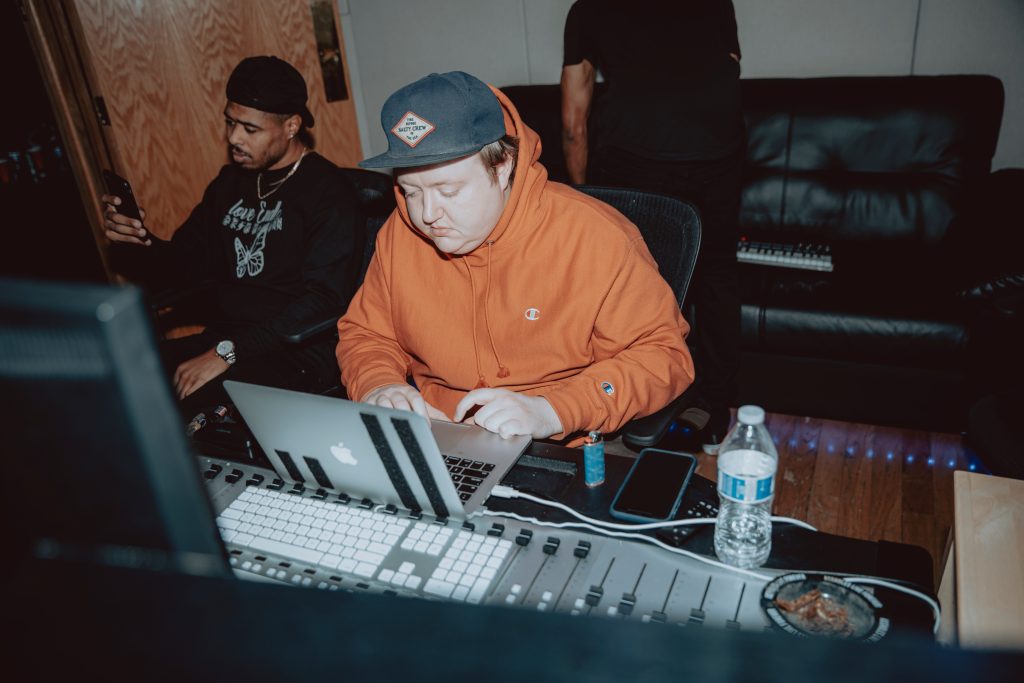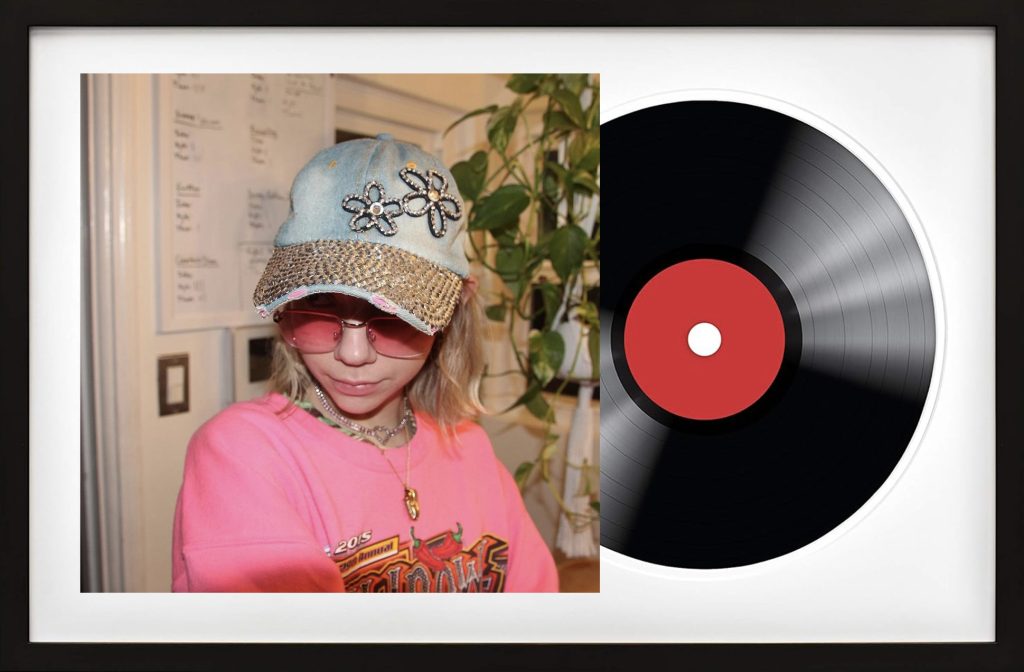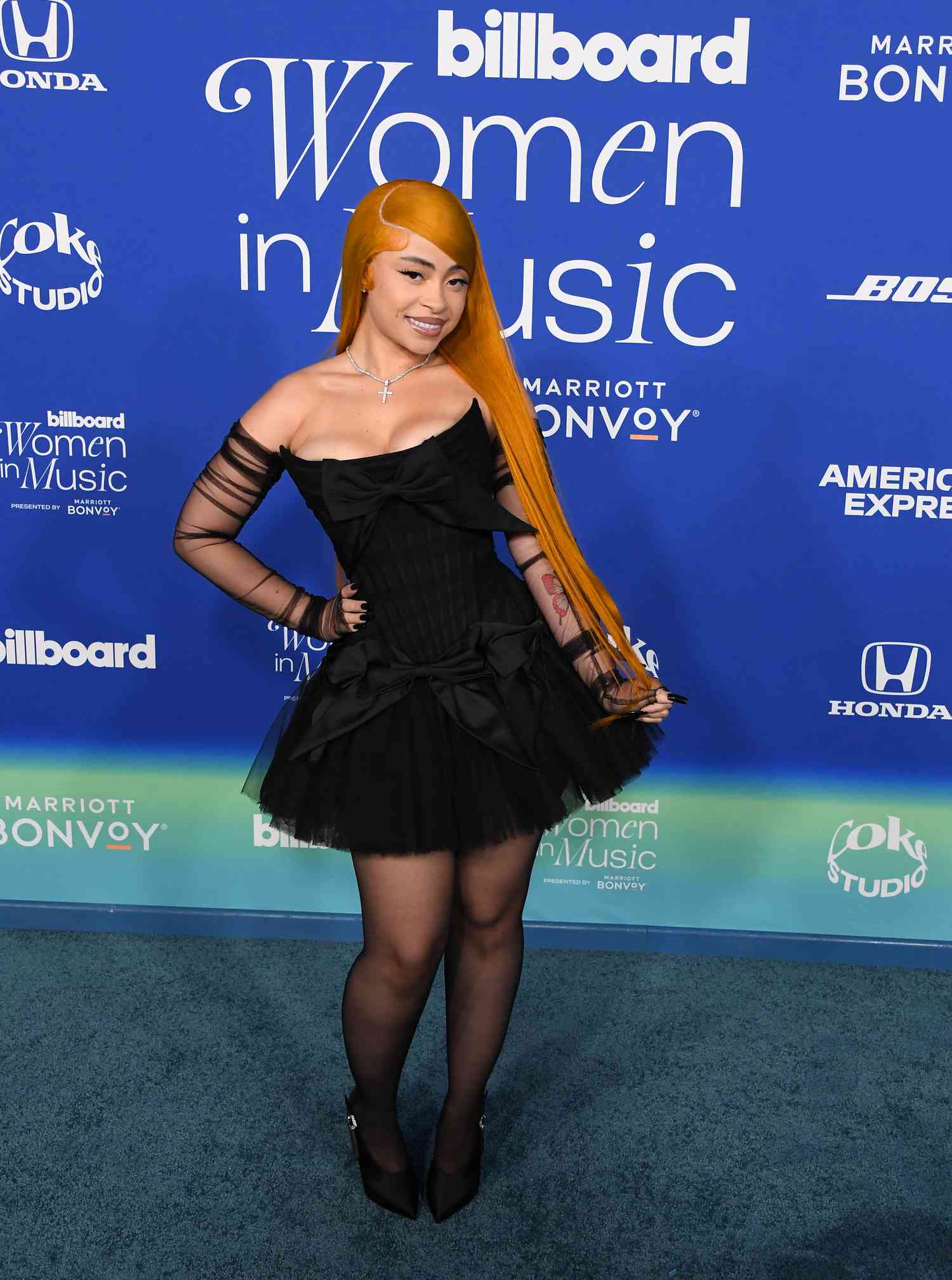Beyond Beats:
The Evolution of Hip-Hop Producers in Shaping Musical Landscapes
By Zach Gibbs

In the world of hip-hop, where rhymes are the currency of expression and beats are the heartbeat of culture, one figure looms larger than life — the producer.
Step into the world of hip-hop production, where you’ll find that beyond the glitz and glamor of the talented artists, lies the producers who hold the true power to shape the genre’s destiny.
“Producers make tons and tons of beats with every different vibe imaginable to give the artist ideas on what direction they want to go in,” said J Shriver, a Los Angeles-based hip-hop producer, who has worked on notable projects such as Vultures by Kanye West & Ty Dolla $ign. “So we play a significant role in unlocking the vibrance of the artist.”

The producer is ultimately responsible for creating the foundation of a track, including beats, samples, and melodies.
But beyond the technical aspects, producers typically collaborate with the artists to refine song structures, enhance vocal performances, and bring a cohesive vision to the project. The producer’s expertise and artistic direction is a necessity in helping define the sound and identity of hip-hop tracks, Shriver explained.
Although they have been known to be behind the scenes in the creative process, the role of the producer has grown immensely in recent years by stepping into the limelight.

“Producers are essentially composers. They make all of the decisions that end up constituting melody, harmony, rhythm, samples, texture, instrumentation, mix, so there’s essentially no substance without the producer.”
– Joanna Demers, Associate Dean of USC Thornton School of Music
Behind the curtain of every iconic track, producers like Dr. Dre, RZA, Timbaland, and many more have laid the foundation where artists build their musical narratives. In many instances, the root of a track starts with the beat.
“Many times it is actually the producer’s work that comes before the lyrics and actual songwriting,” said Demers. “For example, Kanye West, before he was a brand name, was grinding out beats in isolation for years and he would then shop those beats around to artists like Jay Z.”
Demers further explained that Dr. Dre, who has been producing since the birth of NWA, had a stronger presence in the genre and ultimately achieved his celebrity status through the artistry of his production, rather than through his actual songwriting and rapping.
But in order to truly comprehend the artistry of hip-hop production, let’s dive into the overall beat-making process.
“The beats will usually consist of samples, which is synonymous with the melody section of the song,” said Shriver. “Then add the drums, typically a simple and barebones drum beat, and the 808s, which is the bass element. That’s the framework.”

Producers will turn to sampling to truly maximize the creative potential of a track. This is when producers take a portion of a sound recording and implement it into a new piece of music, which involves extracting a segment of music, such as a melody, drum beat, or vocal snippet from an existing track and integrating it into the new track, Shriver explained.
Samples can come from a wide range of sources, including other hip-hop tracks, funk, jazz, rock, or any other genre of music with distinctive sounds that a producer might want to infuse into a hip-hop song.
“In the early days of hip-hop, like in the 70s and 80s, in order to sample, producers had to go to the record store and sift through tons and tons of vinyls until something obscure or catchy caught their ear” said Shriver.
Nowadays, you can find samples and archives on numerous websites across the web, such as Tracklib or Splice Sound Library, in order to find the perfect snippet, Shriver further explained.
In recent years, the emergence of producer-curated albums has catapulted the role of the hip-hop producer.
Producer-curated albums have caused a shift from the conventional artist-centric model, placing emphasis on the creative vision and aesthetic of the producer. By having a more prominent role in the creative process, producers are able to craft cohesive bodies of work due to them being at the forefront of every track in the project.
Metro Boomin is one of the most renowned and successful producers in the current hip-hop landscape who has curated multiple albums by selecting a diverse range of artists that complement his production style as well as by focusing on a cohesive sound.
“I feel like the producer-curated album is as close to a concept album as modern hip-hop music gets,” said J Shriver. “People like Metro Boomin are inverting the trajectory that the artist is expected to be the headliner, not the producer.”
Most notably, Metro Boomin released his second studio album titled Heroes & Villains in December 2022, with every single track executively produced by him.

The album debuted #1 on the US Billboard 200 and is certified platinum. However, the biggest achievement of this album is that it was nominated for Best Rap Album at the 2024 Grammy Awards.
That’s right. An album that was completely curated by a producer, not a rapper, was nominated for Best Rap Album, which truly highlights how much of a vital role the producer has in the current hip-hop landscape.
Moreover, producer-curated albums have facilitated collaborations between producers and artists that might not have otherwise occurred, leading to innovative and boundary-pushing tracks.
For instance, Metro Boomin has brought together artists from other genres like The Weeknd and James Blake with notable rappers like Future and Travis Scott to give listeners a different sonic experience from typical hip-hop albums.
“This collaborative approach creates a sense of mutual respect between producers and artists,” said Shriver. “It highlights the importance of experimentation in hip-hop and pushing artistic boundaries.”

Along with producer-curated albums, there has been a massive surge of female producers making waves in the hip-hop scene, marking a significant shift in the traditionally male-dominated landscape of music production.
This emergence of female talent such as WondaGurl not only brings fresh perspectives and diverse voices to the scene, but it also challenges long-standing gender norms within the industry.
As more and more women step into roles behind the boards, they are reshaping the sonic landscape and evolution of hip-hop.

“Women have been so underrepresented in hip-hop for decades to the point that we’ve had to fight our way into these studios and have had to come in with 200 times more confidence than a typical male producer.”
– Liza Kaye, a Los Angeles based hip-hop producer
Historically, women have been relegated to the sidelines, with their contributions being overlooked. However, the rise of female producers serves as a powerful statement as it demonstrates that women have the skills, creativity, and expertise to excel in all facets of music production.
“Having such a strong access to social media has allowed for this growth. I’ll go on TikTok and I constantly see tons of really talented women who are DJs, producers, and singers and these talents are being displayed to thousands and thousands of viewers,” said Kaye.
Social media has played a significant role in empowering female producers, offering them a platform to showcase their talent and connect with like-minded individuals across the globe.
Through platforms like TikTok, Instagram, and SoundCloud, female producers have been able to share their beats, collaborate with artists, and gain visibility within the hip-hop community at their fingertips.

Kaye further highlighted the importance in fostering an inclusive studio environment for women.
“I feel like women, because they’re underrepresented, are a lot more inclusive and create a safe community when together in the studio,” said Kaye. “And when rooms feel safer, then creativity feels safer.”
Emphasizing safety and inclusion not only nurtures creativity, but is crucial for inspiring future generations of female hip-hop producers.
When aspiring female producers feel supported and included, it can create a sense of comfort in expressing creativity, sharing unique perspectives, and ultimately pursuing a career in music production, Kaye explained.
New initiatives have been created to drive meaningful change for female producers in hip-hop.
They aim to break down barriers by creating platforms where female producers can showcase their talents and connect with other like-minded professionals in the industry.
The Billboard Women in Music is an annual event created by Billboard magazine to give recognition to the achievements of women in the music industry. The event typically features a ceremony where awards are presented to female artists, executives, and other professionals who have made significant contributions to the industry throughout the year, including producers.

It is apparent that there are more actions being taken now to create a more diverse and inclusive hip-hop landscape than ever before.
As hip-hop continues to evolve, one thing remains constant — the vital role of producers in shaping its sonic landscape. Their innovation, dedication, and commitment to pushing boundaries ensures that hip-hop continues to be immensely dynamic and influential.
As we celebrate the past and look towards the future, it is important to not forget about the undeniable role of producers in shaping the world of music one beat at a time.